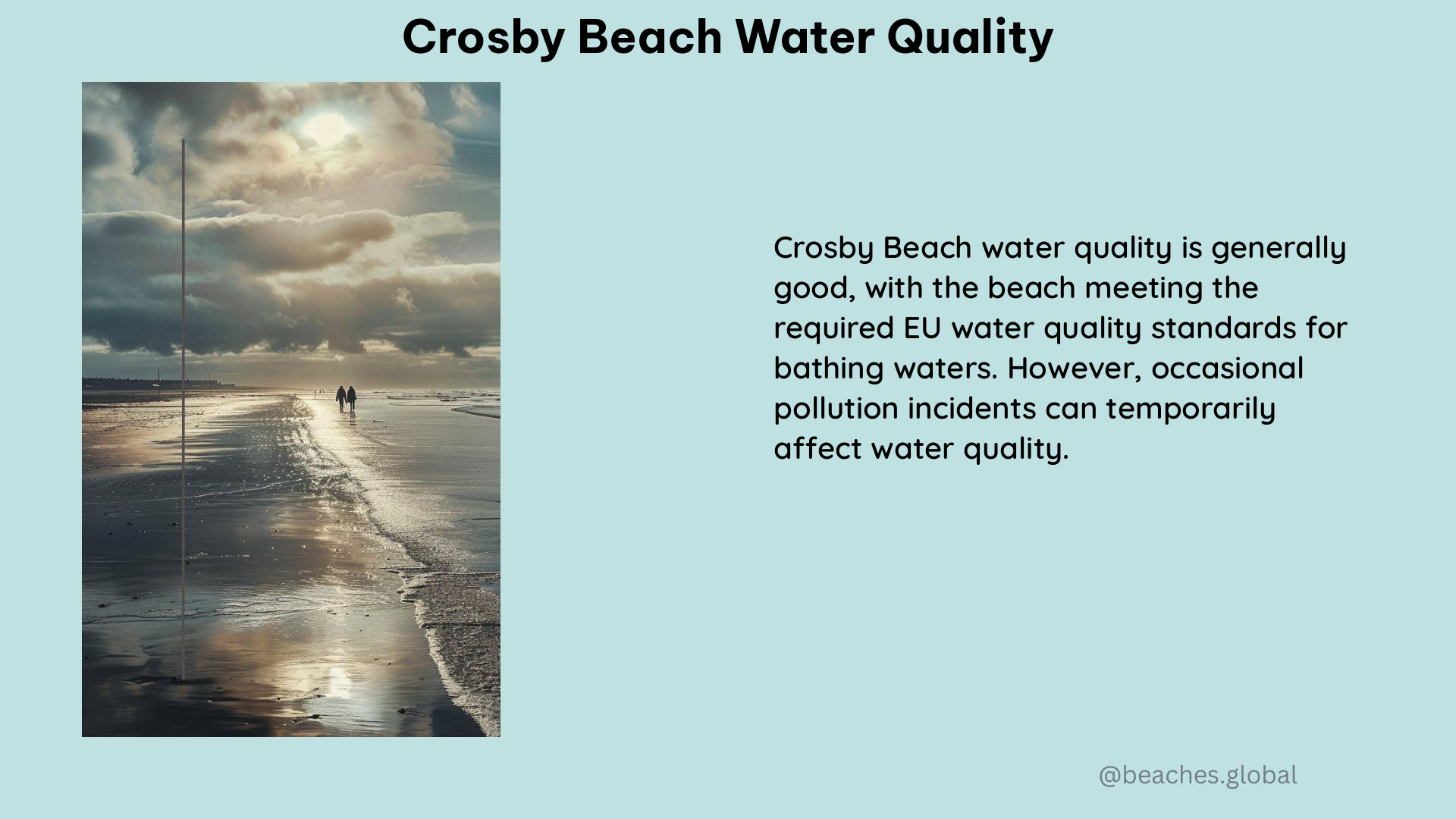Crosby Beach, located in Sefton, Merseyside, UK, is not a designated bathing beach, and its water quality is not regularly tested. The beach is permanently red-flagged, indicating unsafe conditions for swimming and other water activities due to the presence of deep, shifting mud and a strong, quick-flowing tide.
Crosby Beach: A Non-Bathing Beach with Inherent Dangers
Crosby Beach is not a typical beach where visitors can safely enjoy swimming, wading, or other water-based activities. The beach is known for its treacherous conditions, including:
-
Shifting Mud Flats: The beach is home to large areas of deep, constantly shifting mud, which can pose a significant risk to visitors who venture too far from the promenade.
-
Powerful Tidal Currents: The beach experiences a strong, quick-flowing tide, which can easily sweep away unsuspecting visitors, even in shallow water.
-
Lack of Lifeguard Supervision: While the beach has a year-round RNLI lifeguard presence, the focus is on safety and rescue, not water quality monitoring or bathing suitability.
Water Quality Monitoring and Reporting

Unlike many other beaches in the UK, Crosby Beach is not subject to regular water quality testing and reporting. This means that there is no official data available on the levels of bacteria, pollutants, or other contaminants in the water.
The lack of water quality monitoring and reporting is a significant concern, as it leaves visitors without a clear understanding of the potential health risks associated with entering the water.
Safety Recommendations for Visitors
Given the inherent dangers and lack of water quality information, the Sefton Council and local authorities have issued the following safety recommendations for visitors to Crosby Beach:
-
Stay within 50 meters of the Promenade: Visitors are advised to remain within a 50-meter distance from the promenade when walking on the beach, as this is the safest area.
-
Avoid Water Activities: Swimming, wading, and other water-based activities are strongly discouraged due to the hazardous conditions of the beach.
-
Heed Safety Flags and Signage: The beach is permanently red-flagged, indicating unsafe conditions. Visitors should pay close attention to any safety flags or signage and follow the instructions provided.
-
Consult Local Authorities: Before visiting Crosby Beach, it is recommended to check with local authorities or the Merseyside Fire and Rescue service for the latest safety information and updates.
Comparing Crosby Beach to Designated Bathing Beaches
To provide a better understanding of the differences between Crosby Beach and designated bathing beaches, let’s compare the key features:
| Feature | Crosby Beach | Designated Bathing Beaches |
|---|---|---|
| Bathing Beach Status | Not a bathing beach | Designated as a bathing beach |
| Water Quality Monitoring | No regular testing | Regularly tested and reported |
| Lifeguard Presence | Year-round RNLI lifeguards | Seasonal lifeguard coverage |
| Suitability for Water Activities | Not suitable for swimming or water activities | Suitable for swimming, wading, and other water activities |
| Safety Flags and Signage | Permanently red-flagged | Flags and signage indicate current conditions |
Exploring Water Quality Resources for Other Beaches
While Crosby Beach does not have readily available water quality data, there are resources available for finding information on water quality at other beaches, particularly in the United States. One such resource is the Leeds, Grenville and Lanark District Health Unit’s Weekly Beach Results, which provides information on 23 local beaches tested weekly from June 30 to September 1.
This resource categorizes the water quality results as open, caution, closed, or N/A, allowing visitors to make informed decisions about the safety of the water for recreational activities.
Conclusion
Crosby Beach, while a unique and picturesque location, is not a suitable destination for swimming or other water-based activities due to the inherent dangers and lack of water quality monitoring. Visitors to the beach should heed the safety recommendations provided by local authorities and avoid entering the water.
For those seeking information on water quality at other beaches, resources like the Leeds, Grenville and Lanark District Health Unit’s Weekly Beach Results can be a valuable tool in planning safe and enjoyable beach visits.
References:
– Sefton Council – Water Safety
– The Swim Guide – Crosby Beach
– Leeds, Grenville and Lanark District Health Unit – Weekly Beach Results
